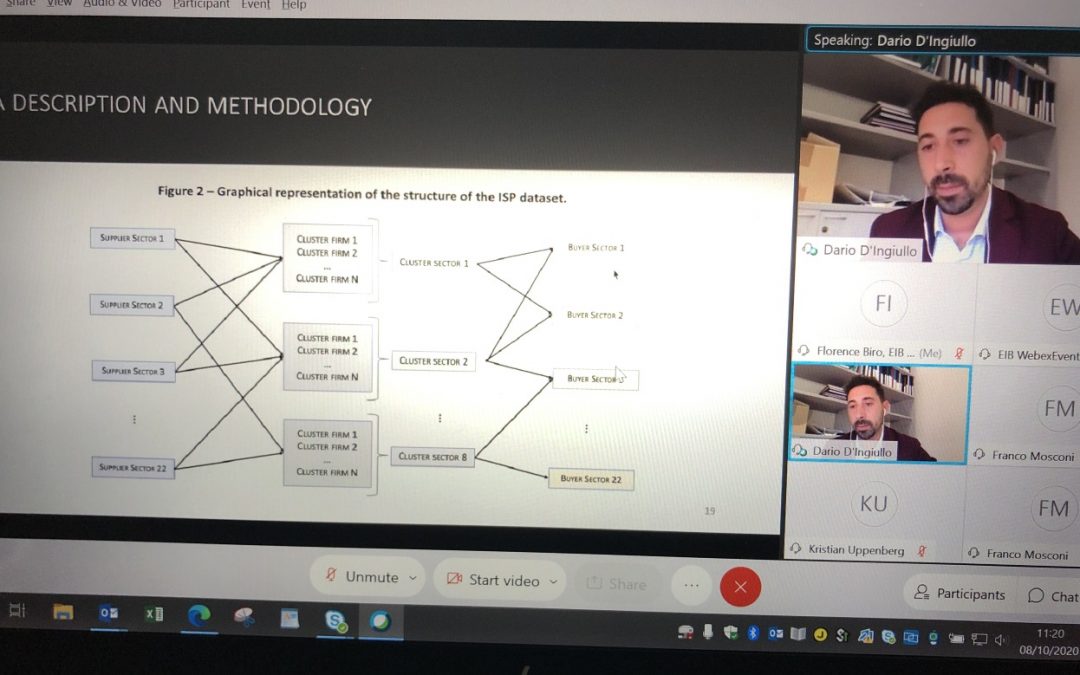The selective restructuring of local industry with the rise of lead firms mostly associated with advanced mechanics, the strategic importance associated with this industry both in terms of value-added and export, and its increasing innovative capacity help explain the success of the Emilia-Romagna industrial cluster in Northern Italy, a true European success story, explained Dr Dario D’Ingiullo (University of Parma) when presenting the results of his STAREBEI research project on “Understanding the Emilian model: A network analysis approach to investigate industrial relationships” at the EIB on 8 October 2020.
Emilia-Romagna’s capacity to innovate is the strongest in Italy, involving both research & development (R&D) and the number of new patents. The regional economic model is also based on a strong export to GDP ratio (40%).
Based on a network analysis, Dr D’Ingiullo’s research shows that a greater availability of goods and services provided by specialized suppliers (68% are from the region); a large and flexible local pool of skilled labour and knowledge spillovers favour the local firms’ competitiveness. Emilia-Romagna’s strength does not lie only in advanced mechanics but also in other industries including bio-medical, electronic or agri-food…
Regional industrial clusters bring together firms in a specific activity or using a specific type of industrial processes based on a diversified supplier base of sufficient size. They generate knowledge externalities and economies of scale that reach beyond the individual firm creating a virtuous circle.
STAREBEI (STAges de REcherche BEI-EIB research internships) is a programme that provides grants to universities in order to finance junior researchers carrying out research projects proposed by the EIB Group (EIB and EIF) under the joint supervision of a university tutor -in this case Prof. Franco Mosconi- and an EIB or EIF co-tutor. To date, it has benefited to 61 young researchers from 39 universities in 14 European countries.
Click here for the presentation.





